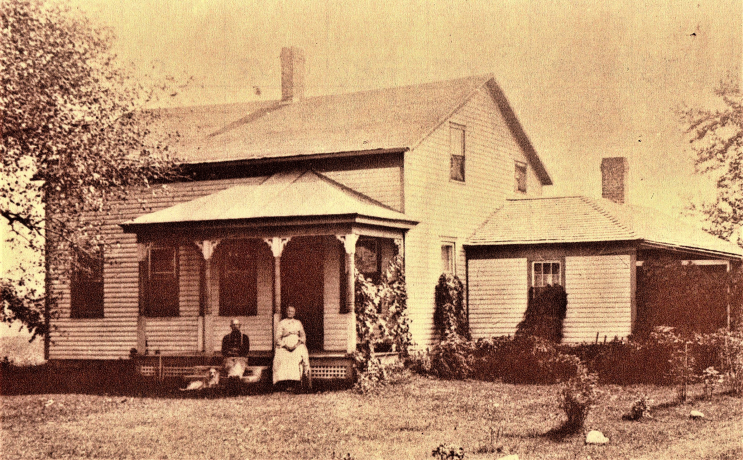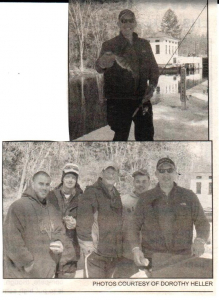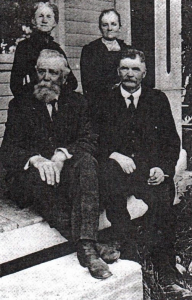SOLOMON KITTLE of CLAY, Confederate PrisonerPosted on September 25, 2020 |
Image

|
HISTORY MYSTERY: SOLOMON KITTLE of CLAY, Confederate Prisoner
Solomon was born in 1828 to James and Cornelia Kittle in Morgan Settlement, a small hamlet on the corner of Wetzel and Morgan Roads in the Town of Clay, just 5 years after it was incorporated. In the late 1830’s his father donated a portion of his farm on the west side of Morgan Road to the Methodist Society for a church building to be called Morgan Meeting House. It still stands today as house of worship. The Kettle homestead (In photo) located at 4356 Wetzel Road was built in 1840 by James for his growing family. They were a typical farming family, but in his 20’s, Solomon left the farm and became a boatman on the Erie Canal system.
When the Civil War broke out in 1861, like many other Union men, he did not enlist; however with the heavy losses by the summer of 1862, an urgent call went out for fresh recruits. Solomon enlisted in the 2nd NY Heavy Artillery Regiment, which was formed to man the big fortifications around Washington, DC. They were sharply dressed in uniforms, were rarely under threat from the enemy and often received visits from Washington VIP’s who were anxious to see troops performing drills. He was a teamster (wagon driver) from 1863-1864. They were called “bandbox soldiers.” They never saw real combat.
That all changed in the summer of 1864. After heavy losses at the Battle of the Wilderness, General Ulysses S. Grant ordered the Heavy Artillery to join the Army of the Potomac who were fighting a vicious battle against General Robert E. Lee’s Confederates at Spotsylvania Court House in Virginia. Then these untested soldiers engaged in bloody fighting at North Anna and Totopomoy Creek, followed by futile assaults at Cold Harbor. The use of brutal trench warfare resulted in high casualties and deplorable living conditions. In May or early June, Soloman was captured and taken to the infamous Andersonville Prison Camp in Georgia.
The camp was at its worse in the summer. It was overcrowded with 32,000 prisoners crowded into a small stockade and a ravine with brutal gangs, trigger-happy guards, stagnant water, raw sewage, no shelter except what they created themselves and a lack of food, causing 13,000 to die from scurvy, other diseases and malnutrition. Conditions proved too much for Soloman and he passed away October 29, 1864. He was not granted the dignity of an individual grave, as all dead prisoners were buried in trenches three feet wide and 100 to 300 feet long. Fortunately, surviving prisoners kept records of who was buried where. After the war, Andersonville National Cemetery was created at the site and each soldier who died at the camp was given a small marble stone.* He had no known spouse or children to carry on his name. Because his remains were buried in a field in Georgia, almost 1,000 miles away, his family wanted to memorialize their son and brother closer to his home. Near the entrance to the old Morgan Cemetery on one side of his parents’ gravestone, a short epitaph to Soloman is inscribed. It is very clear even to this day.
James Kittle, Soloman‘s father, died in 1870 and his son, Philo took, over the farm. Some time in the late 1890’s an H. Fairchild is recorded as living there. Around 1920. George Green with his wife, Priscilla, bought the farm and are pictured in the photograph. This section of Wetzel Road was labeled Green Road on an old map; no doubt named after the Greens.
*I was fortunate to see these long rows of graves on my visit to Andersonville Cemetery when I was 20 years old.
Dorothy Heller, Historian
Zachary Peelman, Research
September 25th, 2020




